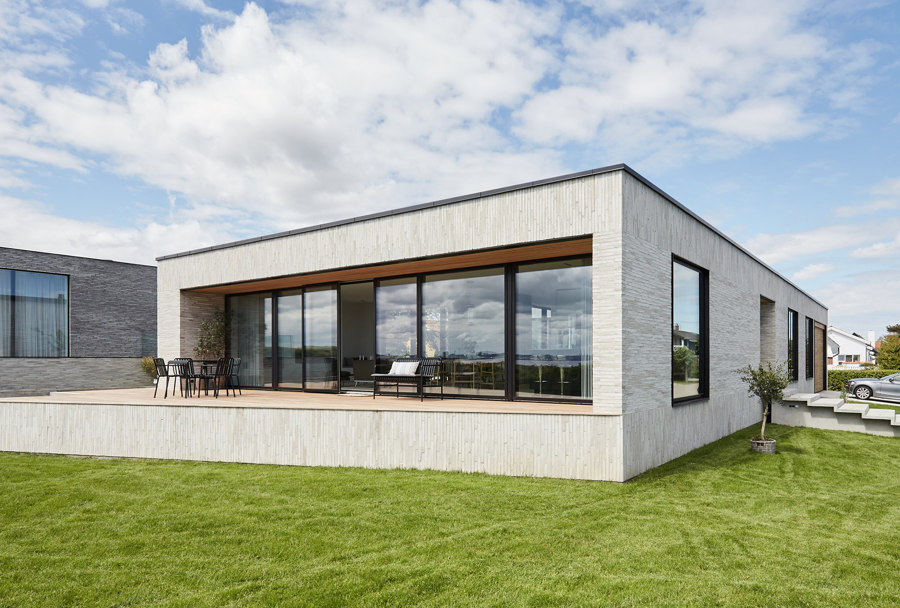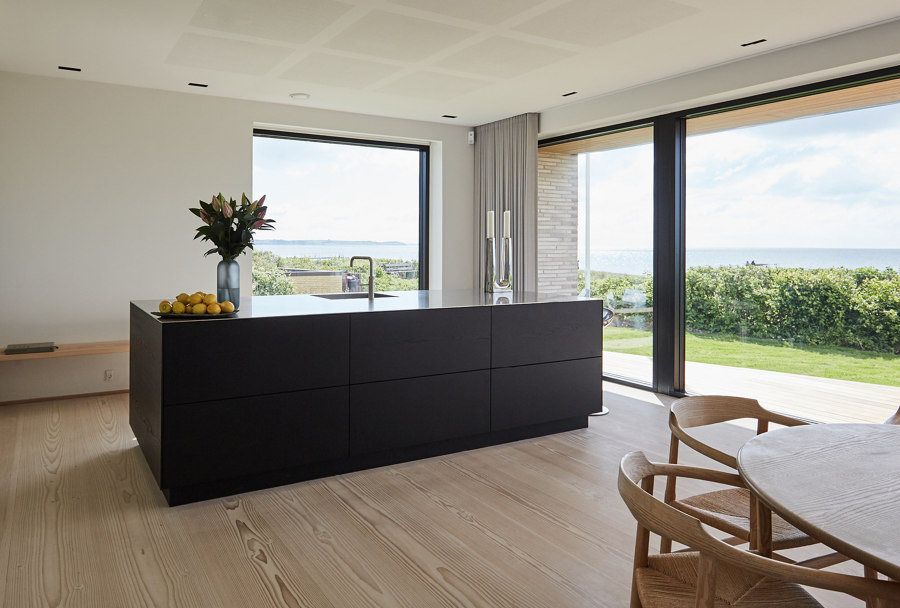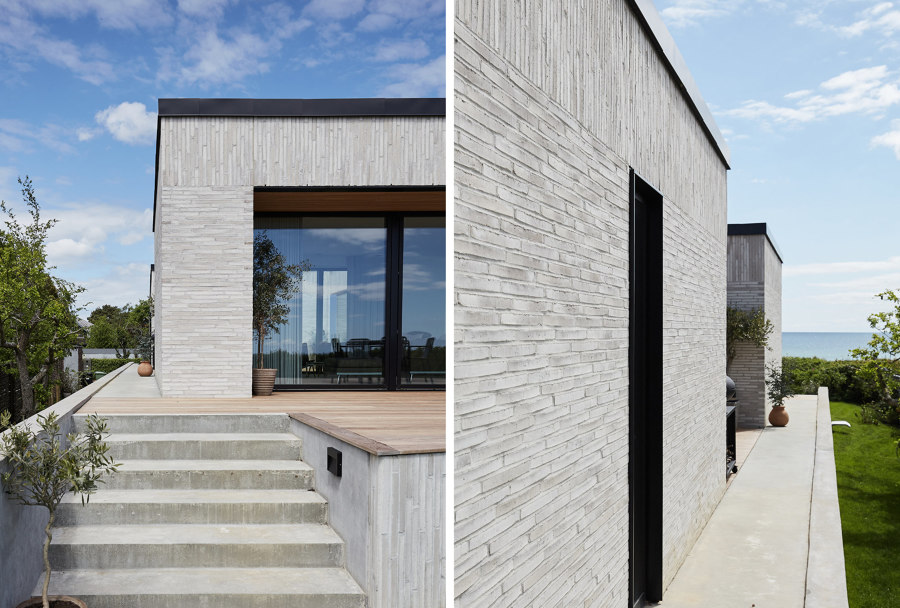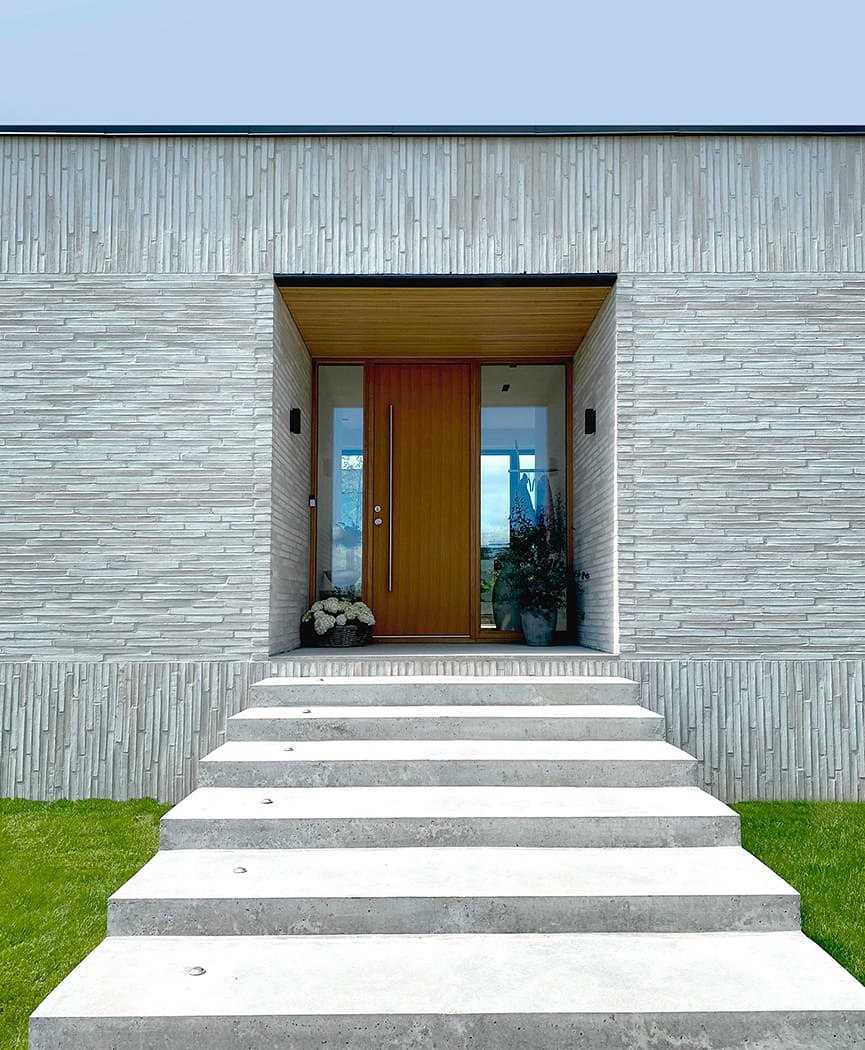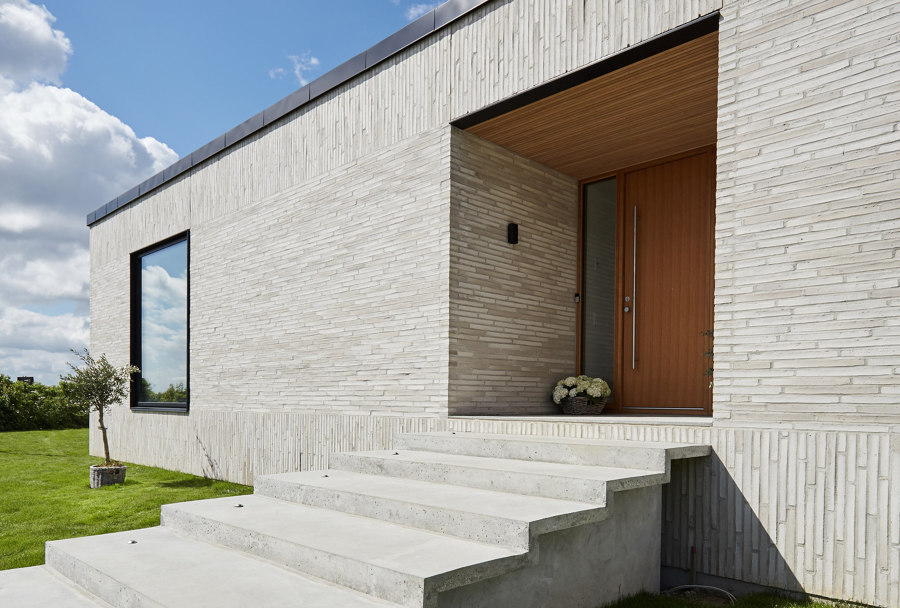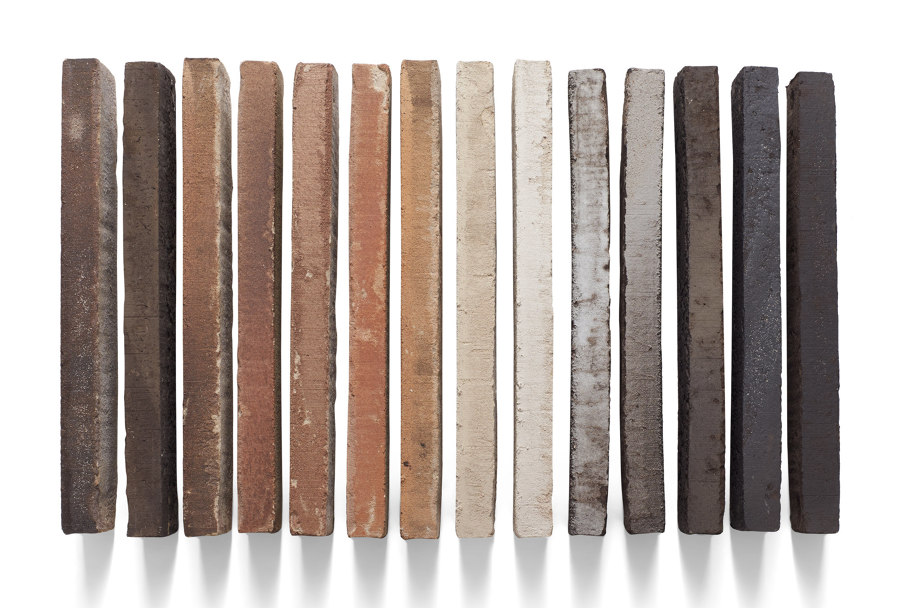Hierarchy thinking by the sea
Texte par Randers Tegl
Aalborg, Danemark
09.12.20
In Danish Villa Sand, characteristic bricks and deliberate variety of bonds come together to create a unique home next to the sea.
Danish design is heavily influenced by simplicity, functionality and elegance. It has been for decades – for one, think of the renowned furniture designer Arne Jacobsen. Also when it comes to architecture, Danish design is quite characteristic.
But what is typically Danish architecture? What does it mean to design homes and comfortable living spaces for the Scandinavian lifestyle? In this beach side villa north of Aarhus, the architect focused on local materials that match the northern climate as well as the Scandinavian mindset.
Casa Sand is oriented towards the sea, not only in its location – but in every architectural decision. As you walk through the house, it is always possible to see the water – as such, the architects have succeeded in making room for the sea in every single room of the house.
‘In Casa Sand you can take in the view of the sea anywhere in the house. You literally wake up to it, brush your teeth to it, or shelter from the wind to it in the outdoor courtyard; and still take in the ocean. It seems so simple, but it takes a lot of time on-site and trust from the client to achieve that vision,’ explains Niels Christoffersen, who is one of the two architects behind the project.
Waterstruck inconsistency
Architecture of this kind requires worthy materials. In this project, the architects used a light-tinted RT 154 Ultima brick. Ultima is a series of waterstruck bricks in an exclusive long format. Each brick has the length of two ordinary bricks and a height of just 38mm.
The waterstruck bricks from Randers Tegl are produced by means of a traditional Scandinavian manufacturing method, that has been refined and perfected for generations. The method enhances the raw material and offers the bricks their distinct aesthetic. During production, the principal material – clay – is mixed, processed with water and burnt with special techniques.
When the water mixture is poured into individual moulds, a unique textural patina is imprinted on each brick, so no two bricks are alike. It creates a finish that cannot be achieved with any other method of brick-production. The result is subtle and distinctive surface textures that resemble the weathered look of old-fashioned handstroked bricks but has the technical endurance of modern bricks.
A salute by brick
The use of bricks is central to Casa Sand, as two horizontal ribbons of vertical bricks salute the sea. The bottom ribbon elevates the house to achieve the stunning sea view, while the top ribbon frames that view. The variety of bonds and the extra-long format of the brick emphasises focus on the horizon. One of the architects behind the project, Niels Christoffersen, explains hierarchy thinking this way;
‘When designing a house with such a picturesque location and scenery, you take a pledge to stay true to your core idea: horizontal hierarchy. In the case with Casa Sand, the obvious choice was [to] use Ultima long format bricks to accentuate the long vertical lines. The bricks have an adequate weight, that settles the house nicely in the dunes to dwell peacefully when the harsh autumn storms rage.’
Out of the ordinary
The extra-long format waterstruck linear bricks are increasingly popular and play various roles in modern architecture – from private villas like Casa Sand to office buildings, hotels and landmarks across the globe. And with great success as the natural inconsistency of the brick creates a unique and distinctive expression – quite suitable for architecture out of the ordinary.
About Randers Tegl
Ultima is produced by Randers Tegl. A family business through generations with roots in 1911, where Carl Piper bought his first brick factory. Ever since, Randers Tegl has continued to develop production methods and grow through the acquisition of brick factories and the extensions. Today, Randers Tegl is the largest brick supplier in Denmark and Germany.

